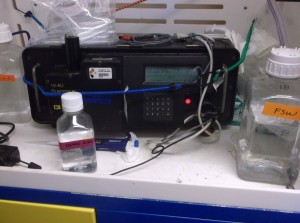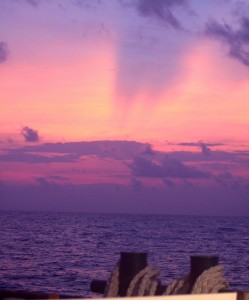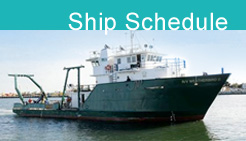Deep Sea Fish and Sediment Surveys in the Gulf
Friday’s adventures
AHOY ! It’s officially Friday, August 9. 3:45 came REALLY early after we didn’t clean up the lab from last night’s filtering until 2300. The CTD drop time was scheduled for 0400.Now that I’m up with coffee in hand, the deployment has been postponed until 0500 according to the job board in the lab ( something must have happened to the sipper during its 5 hour deployment )
I have noticed that by day 4 ( even though the first day is strictly getting to our test site) people had already lost track of the date, let alone the day of the week. We take so much for granted! Today is cruise day 5, though. Another thing about the time, we had crossed into the central time zone and everyone was having trouble remembering the sunrise/sunset time for their specific plankton tests ( central time zone is an hour sooner than our time in Wesley Chapel). If your smart phone had “synced” automatically, then all is well, otherwise, it’s very confusing.
We hit rough water, comparatively. The boat has rocked most of the night, so that one of my berthmates has been sick off and on throughout. The captain had relayed early in the day that this was to be expected and that the turbulence ( water, not air) had been very little for August – when we get so many storms, let alone hurricanes. ( I’m told that these are ONLY 3-4 feet seas, but it feels more like Zumba at Adventure Island.)
Anyway, we rotated to new stations yesterday and my new station ( for two drops) was testing for HPLs( high performance – a chromatography of special pigments – orange, yellow, etc.) , PPs ( phosphate particulates) , and nitrates.
 As Sue explained to us, though, we may have high levels of nitrates from the humectant – decaying matter, maybe leaves, but the chlorophyll levels are what tell us if the certain plankton are respiring ( CO2) or not. How do you explain that there are enough nutrients in the water, to support the plankton community, but they don’t seem to have populated the waters as expected? Joe took over my spot with the nitrate tests and Sue is still plugging away with her chlorophyll tests- her particular favorite. The waters where we have been testing are considered oligotrophic since there are limited plankton species. ( We learned about these species in our class and marine biology references reminded me what I was looking for).
As Sue explained to us, though, we may have high levels of nitrates from the humectant – decaying matter, maybe leaves, but the chlorophyll levels are what tell us if the certain plankton are respiring ( CO2) or not. How do you explain that there are enough nutrients in the water, to support the plankton community, but they don’t seem to have populated the waters as expected? Joe took over my spot with the nitrate tests and Sue is still plugging away with her chlorophyll tests- her particular favorite. The waters where we have been testing are considered oligotrophic since there are limited plankton species. ( We learned about these species in our class and marine biology references reminded me what I was looking for).
Teachers: This is my chance to plug the Outreach classes from USF. Dr. Greely offers NOAA/ BWET/ GLOBE classes to teachers.. We’ve had teachers from all over the state participate in these classes, usually on Saturdays and often times involving a field trip or two. Getting the word out is how we share in learning. Contact Dr. Greely at USF’s Marine Institute. When I see her name or Angela Lodge on my email, I respond immediately. You don’t want to miss out on their instruction because there is application regardless of your grade level or specific content area and they share resources and tools that are incredibly practical.
…. Gotta run. Time to deploy the CTD , then bongos, followed by the Shipek ( new tool for this venture), and then the SIPPER again. We’re in more shallow waters, so the run is shorter, but what would you expect to see for chemistry ( more or less nitrates and phosphates) and plankton ( more or less biomass ) in the Bongo nets?
| Print article | This entry was posted by greely on August 15, 2013 at 10:31 pm, and is filed under Oceanic Updates. Follow any responses to this post through RSS 2.0. You can leave a response or trackback from your own site. |


